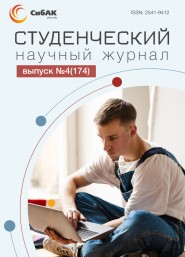Статья опубликована в рамках: Научного журнала «Студенческий» № 4(174)
Рубрика журнала: Педагогика
Скачать книгу(-и): скачать журнал часть 1, скачать журнал часть 2, скачать журнал часть 3, скачать журнал часть 4, скачать журнал часть 5, скачать журнал часть 6, скачать журнал часть 7, скачать журнал часть 8
USING INVERTED CLASSROOM TECHNOLOGY IN A SOCIAL STUDIES COURSE
Дыбова Татьяна Михайловна
The concept of modern education presupposes the development of students' skills of independent work with information search sources, the ability to independently solve a problem situation or task. Using the inverted classroom technology, we implement the requirements of the Federal State Educational Standard, contribute to the formation of UUD, motivation for the educational process, with the help of independent activity.[1, с. 5]
It is worth considering that modern children are people of network age. Pedagogical technologies should take into account the fact that the child has personal mobile devices - smartphones and tablets. Therefore, new educational conditions should be created in a modern school, taking into account the ever-increasing speed of information flows. At the same time, applied pedagogical methods should be aimed at developing students' skills in planning activities, critical analysis of the received material, as well as effective implementation of various ideas.[4, с. 123]
In other words, a child from a passive listener should become a seeker of truth, a developer, a thinker and a discoverer. The teacher needs to be assigned the role of assistant, partner and organizer. Currently, active forms of learning are gaining special importance. After all, they do not allow you to "train" for the exam, but to ensure fluency in the subject, develop independent thinking. In the course of working with the inverted classroom technology, students concentrate on the educational material, discuss the questions that have arisen and their creative solution. Such lessons primarily contribute to the development of critical thinking and mental activity in general. Also, after the use of technology, the inverted classroom, the child has a desire to acquire new knowledge, develops the ability to think logically, develops memory and imagination. [6, с. 21]
The methodological literature presents many ways of organizing the technology of the inverted classroom in social studies lessons. The essence of the "inverted" class methodology can be reduced to three main components: - Preparation (selection or creation) of a virtual educational environment by the teacher: video tutorials, presentations, other materials and assignments for them, as well as the choice of an electronic service for feedback from students. - Organization of educational activities: determination by the teacher of key competencies on the topic, forms of work with students in the classroom, preparation of tasks for the work of students in the classroom. At the same time, students in the process of working together with the teacher solve additional tasks: deepening, consolidating and repeating the material they have passed. - Current and final assessment of students' knowledge and competencies. The teacher can choose together with the students several forms of final work, for example, in the form of a test or a project.
The essence of the "inverted" class methodology can be reduced to three main components: "Preparation (selection or creation) of a virtual educational environment by a teacher: video tutorials, presentations, other materials and assignments for them, as well as the choice of an electronic service for feedback from students." Organization of educational activities: determination by the teacher of key competencies on the topic, forms of work with students in the classroom, preparation of tasks for the work of students in the classroom. At the same time, students in the process of working together with the teacher solve additional tasks: deepening, consolidating and repeating the material they have passed.
Prepare (create or find) video lectures and assignments for them, auxiliary materials containing memos, algorithms, templates that students will focus on when doing their work. It is clear that the main example and standard for the students' work will be the materials (products) developed by the teacher, especially if he performed them independently. Come up with a flexible system for evaluating students' work, specific criteria for marking. Moreover, they should be as accessible as possible to students so that they have the opportunity to independently evaluate their activities. Grades should not punish the student, but show him opportunities for further improvement. Establish the types and methods of communication with students and receiving feedback from them. .[2, с. 10]
Thus, the technology of inverted learning involves changing the role of the teacher. It becomes possible to cooperate more closely during the educational process. The role of students is also changing. They cease to be passive participants in the educational process. The technology makes it possible to place the responsibility for the student's knowledge on his own shoulders, thereby giving him an incentive for further creativity, directing the learning process towards the practical application of the acquired knowledge.
Список литературы:
- Glushan V.M., Ivanshina A.A., Kondratieva T.P. Technical and audiovisual means of teaching in teaching historical sciences // Bulletin of the Taganrog Institute named after A.P. Chekhov. - 2017. - №1. - С. 31
- Grebenyuk O.S., Rozhkov M.I. Terminological dictionary "Pedagogical technologies". - Moscow, Nauka, 190. - 543 с.
- Davydov V.V. Russian Pedagogical Encyclopedia. - Moscow, Nauka, 2008. - 512 с. ISBN: 09011123789
- Bruner J. Psychology of Cognition. Beyond Immediate Information. - Moscow, Iskra, 1977. - 267 с.
- Doroshenko N. S. Activation of cognitive activity of students at the lessons of history and social studies. Methodical recommendations // Young Scientist. - 2015. - №24. - С. 937


Оставить комментарий